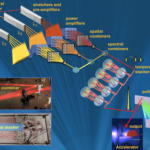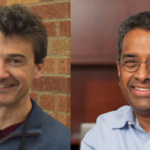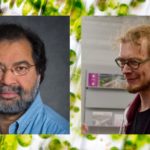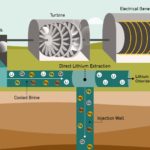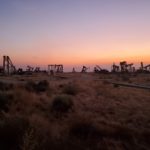An international team of researchers used a novel methodology combining remote sensing, machine learning, and terrestrial biosphere models to find that plants are photosynthesizing more, to the tune of 12% higher global photosynthesis from 1982 to 2020. In that same time period, global carbon dioxide concentrations in the atmosphere grew about 17%, from 360 parts per million (ppm) to 420 ppm.
Latest News
These Tiny Liquid Robots Never Run Out of Juice as Long as They Have Food
Scientists at Berkeley Lab have demonstrated the first self-powered, aqueous robot that runs continuously without electricity. The technology has potential as an automated chemical synthesis or drug delivery system for pharmaceuticals.
Fiber Lasers Poised to Advance Berkeley Lab’s Development of Practical Laser-Plasma Accelerators
Berkeley Lab researchers have zeroed in on the limitations of laser-plasma particle accelerator (LPA) development efforts and believe they have found a new path forward with optical fiber lasers. A new approach to high-power lasers – combining the pulses from many fast-acting but lower-energy optical fiber lasers – will energize these super-compact accelerators.
How Can Next-Gen Computer Chips Reduce Our Carbon Footprint?
Berkeley Lab scientists Maurice Garcia-Sciveres and Ramamoorthy Ramesh discuss how future microchips could perform better – and require less energy – than silicon. Over the next three years, they will lead two of the 10 projects recently awarded nearly $54 million by the Department of Energy to increase energy efficiency in microelectronics design and production.
Chloro-phylling in the Answers to Big Questions
Photosynthesis – the enzyme-based process of converting carbon dioxide into food, using water and sunlight – is literally the foundation of life on Earth, and understanding the reaction at an atomic level could lead to vast production of renewable fuels made from greenhouse gases sucked out of the air. A Berkeley Lab team has been uncovering precise, step-by-step details of photosynthesis for years. We spoke to two members, co-lead author and senior scientist Vittal Yachandra and co-first author and postdoctoral researcher Philipp Simon, about their latest study, shooting stuff with lasers, and why they chose this field.
Sizing Up the Challenges in Extracting Lithium from Geothermal Brine
For geothermal fields around the world, produced geothermal brine has been simply injected back underground, but now it’s become clear that the brines produced at the Salton Sea geothermal field contain an immense amount of lithium, a critical resource need for low-carbon transportation and energy storage. Demand for lithium is skyrocketing, as it is an essential ingredient in lithium-ion batteries. Currently there is very little lithium production in the U.S. and most lithium is imported; however, that may change in the near future.
Methane’s Short Lifespan Presents Golden Opportunity to Quickly Address Climate Change
A Q&A with a Berkeley Lab scientist on how a comprehensive low-cost, high-tech approach to pinpointing California super emitters could bring about rapid methane emissions reduction within a decade.
Berkeley Lab Honored with Three R&D 100 Awards
Three technologies from the U.S. Department of Energy’s (DOE) Lawrence Berkeley National Laboratory (Berkeley Lab) have won a 2021 R&D 100 award, representing innovations for memory and logic chips, next-generation batteries, and radiation detection and mapping.
New Technology Sees Underground to Assess Crop Roots
Berkeley Lab scientists have developed a new sensing technology to assess crops by “seeing” into the soil while keeping a plant’s roots intact. Tomographic Electrical Rhizosphere Imager (TERI) placed first this month in a Bayer Crop Science Grants4Tech competition that evaluated how novel sensing devices can collect key root trait data, including mass, length, and diameter of important agriculture crops, such as corn and soybean, in the field without disturbing the plant.
Managing Water Resources in a Low-to-No-Snow Future
A new Berkeley Lab analysis finds that if greenhouse gas emissions continue along the high-emissions scenario, low-to-no-snow winters will become a regular occurrence in the western U.S. in 35 to 60 years.




